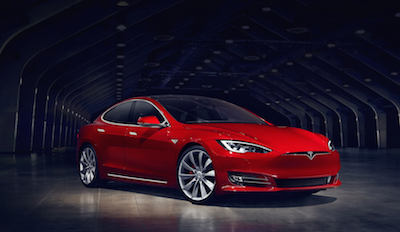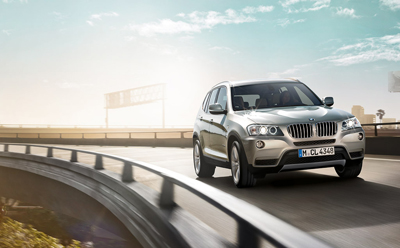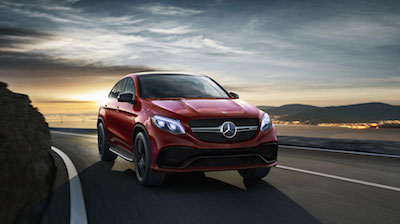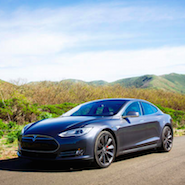U.S. electronic automaker Tesla Motors' Model S is the ideal luxury passenger vehicle, according to research and consulting firm AutoPacific, Inc.
Owing to its focus on technology, Tesla also unseated Porsche as the top brand to end its three-year reign. Tesla’s popularity points to a shift in concerns for today’s drivers and further cements its growing reputation among luxury consumers as they adapt environmental and technologically minded values.
"By asking vehicle owners if they would change various aspects of their vehicle if given the opportunity, we not only identify problem areas and opportunities for improvement, but we also find out which manufacturers are truly hitting the mark with owners," said George Peterson, president of AutoPacific.
The 2016 Ideal Vehicle Awards are based on responses from over 65,000 owners of 2015 and 2016 model year vehicles. Consumers were surveyed after 90 days about how 15 different characteristics, including ride and handling, interior storage, safety, technology and power and acceleration, compare with the owner’s expectations at time of buying.
Safety first
In luxury categories, Tesla’s showing was strongest. The electric automaker entered the marketplace only eight years ago but was declared the ideal luxury brand, with the Model S being named the top luxury car.

Tesla Model S
Based on AutoPacific’s surveys, 17 percent of consumers want simpler and more intuitive technology in their vehicle, and 23 percent want more power and acceleration. Among Tesla owners, these numbers are 4 percent and 9 percent, respectively.
While Tesla took home the top luxury awards, the overall winner was the Volvo XC70, also crowned the top aspirational luxury car. The Lincoln MKZ won the award for best luxury mid-size car, effectively ousting German and British heritage brands from the top awards.
Once symbols of American excess, SUVs have emerged as one of the most popular vehicle classes, and luxury brands have successfully made a name for themselves in the category. The Mercedes-Benz GLE Coupe was named the best premium luxury crossover SUV, while the BMW X3 was awarded as the best crossover SUV.

BMW X3
Notably absent from all crossover and SUV categories is Land Rover, a brand whose name is closely connected with such vehicles.
While luxury brands successfully responded to consumer demand with SUV models, other needs are either constant or unaddressed. Over the past six years, the share of car owners wanting better technology in their vehicle has actually increased, albeit slightly, from 27 percent to 29 percent.
Safety has also emerged as an increasing concern. Six years ago, 17 percent wanted more safety features; today that number has jumped to 26 percent.

2017 Mercedes GLE Coupe
Because the Ideal Vehicle Awards measure results against expectations rather than overall performance or satisfaction, they are tied heavily with marketing. Brands that oversell a feature of their car might come up short in the awards, disappointing customers by virtue of the expectations they have created, not by the actual value they have offered.
Shifting gears
The first 90 days of vehicle ownership are crucial, as satisfaction in that period correlates closely with repeat business.
Despite mostly satisfactory showings in AutoPacific’s Ideal Vehicle Awards, a recent J.D. Power study revealed that mass brand automobiles have higher-quality new vehicles than their luxury counterparts.
While premium brands averaged 108 problems per 100 vehicles within the first three months of ownership, non-premium brands averaged 104. Initial quality is correlated with repeat business, suggesting that luxury brands should get back to basics and improve quality control before proceeding to make sales (see story).
With twin concerns of safety and technology mounting, it is no surprise that consumers view Tesla favorably. From the beginning, the brand has sought to be a leader in the sector on those fronts, with recent developments bolstering the commitment.
Last week, Tesla Motors unveiled the second part of its “master plan.”
The acquisition of SolarCity (see story) marked the completion of part one, which also included the creation and distribution of three vehicles, culminating with an affordable, high-volume car, the Model 3. The new plan includes more vehicles and a big rig to better address the consumer market, autonomous vehicles and an ambitious entry into the world of public transportation (see story).
{"ct":"0CLk2oeX\/bMr38IKC1veH1sgfybcPQDbF2JquNkSiZSuaX5rrfwsnb1JLrvD3QjMrCip5CXrRm08MPiXjUwKSlB4PlcvzYc8rP9EfnwIyO0+ddHxRiZrDHR\/RqznFcGK7MR5Ts10WyHq\/pW+cvmQasKyjo\/tV0QdIhEmrxKRsnIJimfI+WsLibLeXEXujtZwYst8ZW5iekU9wLgt5d6UCQdVqIqlx5XZWdvLAZx80YSyThTfrkvjSuF7Fo\/\/qjVyAXOl38wjz9FguRxuO9OXsQ4x4JXDuTWD1PG9XmzxVllqQE5O6qDZJGBpapfBT9g9xcHUTq0fYLh3ZXv8ilSNrtkU8mpam3N+R2rqUUW+P10JWW5XDix1zUOBztB4hfTPe+C8VQUM4oVcK7qvILBbQSsL+q76SNPcRWoIK3gCWX3laA4Yf4ngouUJVsqvVt8uDRTCPu35pHJca3QanR496FQduB8uKJIbb7CiqxVrwkcF8msyWahANSwVVpl4x16+sL6pAHRijqxJKuOfGJ8oR3tkYR5MdaTRfJIlS+Wa\/wR1DXB2M8np9uQWW+cY4KmkliBKZAnuoN53iI7KMjI+Mg3HNxm7iqXvF0AKYjXxCjAN+0KaD5X6mxgdXzDFnYojBgwnEJO0OZyOuY8tZsC9Biwh01Fu8ES+ndQdA6\/pPGjVPxfIOQ9D\/Dl5rFxB8Y6NbS3aeQGVD1EtPb0rlp\/rPEw3SMnZXTW+MPFOfPzgp5Ybzb8vL5bVCPy4rWns2s8A\/bI0oD7KiILxWOGv6W3mrHbMkVHhciiqqFu5TIp\/XwHobVRy6HeA8s6IEHVLWt0Tb2r0+buK2d7yjoApmbTOsa2Shomk9qkKuU2wNEiNVvy4XqcXegD7vEi64Af8tfd4zwebGP12Sm3miqcFW6fOSt24LUMZ7n5LamATD21naS1MP+WQ2rEgiFpMiKgOCLm2eUjeKB30uE5U1uzQSGlUbLGaJxFnjneVPSJYrYM0wVoLQAUQILYDZPdYlAaO8qEtm2wEs434R7XfUr9FvRMU6redjP2PEJzRBjshcaw0Q\/9JICQ4UF6x9+VN2+4q+7d\/1wC7ZMA9bXFs6\/YblkbrYA+GAgSY7qPB0+TuXfgviSfwwRkvySlwQyGer\/35TNv+siziiz90wjxT0ARlN9C4o5Gf73N78aePf24sDmqc7iQsSBCuRDEjQX5RVbTfYSZGn6YOxmgLX2Y4my1B2+EA8IPIW2SVk71IGpD9g5AFhHjOgoZCfbBBQ2hzuc3sEuGd\/nai\/VE0K0sUaHI3uCTGVJz3Q\/2KsqbLH80VuUCm6T7L\/SsJqwp\/CyMdxwyT+\/\/rYobs64bfIIx\/t0Zh\/BGcQ88C4FcdDWAPEZVIXSHSMomLlrGcGuzF+N3I7i177VO3Tf5FBkNsZAJEVKWiCmNLhW0sFDzuX1rws\/trqtYVjEPn1VTWqmMoeX7pN2ZmqSFdC13G0xh95vBDPm7GCrI7K4pxrCtC3C6+gNSJLGuqr3R6\/AMfDcc1KutrUw70AUlcaT9jP7Epdx4FUpxREgk4vV5nZWD+L9Mjzef6hNCoFyhHEhxiDbehgb8def3hN2FK9wVVj4x4zjmq5JVwhkdSBlcpOBiduJTKVSK3SSDwIwUdhpS9HvalMYNN4wwtiWtjbZm9FRbO8YTuoN+Q0PjQ1LxFK3fWJJtP9KvzKz5Sm\/dg6p7HaxU9FfThHCg4H8xT125Etndq3PUZgv0UoHaUn62lzcu\/4T9Rh1ibXJ3ziMr\/26Ad+razWSywTmmeOKgkEf\/0NEHxVnmQT70ZXFtqx+JsKNcQ51FhRJrH+SvtAoqTkK6RrjvuujkWmgz0qApln5SxRT8zJGmuLDS4MirrncuE+5Wc3hnLG2WUxJbwplGq8UrMO+WrElyXW5NZvAFlSzi\/CeyRvifX3TG2N0zBWNyB1uW8tIll4ECbC8buEIaN5oL5SZUve1Qc\/Ww4Z6\/AU6WBwA1Y2FLXSFdy71qPyVTBNp53FaKM8qQT+cTthPI0VEurartZVLCbhPwtgaMZ9wDkZeN+7ylnRgxG9ohjhTEPhUM+uZtLhqfuPUZpeomavYng\/NkZGqdJEzSJfMyJrBE+zFvJdDypqQcdi697KbJ5zXskxi5zRohlvykg9mQl3b3fUWrGWlEcWgDq3xUutZ6rZ\/PhlM2PsScLqrMIq639QC+61VofJv741ADsymFJE8TVcj7sRlUDGzhHSeWZYBqRwQLKDheHUJsXN4bk83BqYMfILNgugJIZ0jXlVWf\/daKgoJOOSdDv9RpcC1kIdqal80VrLq+D+fYU6UsM7JzBAoOptSOa2263YE1ZEHbnHTN4oTEpjxm9pU65o4rXnqOtxkn53KWH5esu\/GTY26lh0jceKL4zZpxSC7dLdgvM+S62nNA8AiEAINlDjTyZMk8mAcynIT8N7cX1II\/XwKYZuS2BxcU2k6UOgLqBCZK8ig0xTtslKcecll\/0+THRYz7RpAm44cH3E04NQZZub7cGOUn9NEr2LOupQPn9Ofjb4hwDVw1ft+D6mUscpHNqanLo+8EniRSX0TrePk\/t6LLpSMLr16SgkI9s3cWPsCPbQ3UgG29zZ\/mnHb3vfqFJ3C9uVBF5vbGvIrTfZdSyVeucYQ\/ry2RCbVyIw\/VdTGzMWy4GRAcvUvuKKdLcLBBwkEbM4QaeGg8cwU0cOikIuuaFDQo4zqLRxb\/R6U\/rZj+mPajM7zmoBkZ\/mkG4desUL8bxG0aP+tHAyOY1Y2bOmEZ1RtqlEhwiy14w0E5EjA6LlaBf\/dqQapNhvWnRpgLZRhAjFX0N4EwC9nkmoofxzCqcG7\/33Xq\/E+JIL0W9oNYQVz6Cp6h31zO0gOEH+75TvC0QrQYoA+BaW8oNA44WHWgNQlYej8QPdxBgIAMtKMTtUpgQ+xj3mIcD3WT15Df4JcWOoVzmBho+mbzmrYiWdtCm+sv+a\/Z0pvxIniPkg6isRJa8A4YA6cglujBE8xZq\/QdxtqYyBrizLM8NbaUq1vTpwBIU9JhllQGEdbeIXexeM4rZPsjmv3kUWr0aqO9guwmMnxaNsafs6+9XOJHDu+izhV9nkAyVTty5kHFH41cdHjHkelPFD16soEPzZhC4ueE5bSUivCLoCZ90PxIk48kc+uYKx7tebkXME0MAeCgN7t7+SaUGK4KmD2vsjHwQ1zckfFBJ4yHdHal5V1tKdhXT\/HsXqxxnB3OAOwtgFN2ilpPrL2hx1cIyQmb5clY\/eWI4FK9dSyQLawpf7lZZ3qh2kxXhpsq+GNq5uKtj+71QS7iMLzjYpWAr5TSMDDNsUXF8JSpdNPbBx8F++8OxacRR5BBtANfEhK\/KlXHNIM9Iw2QfLhNKIabfXBAbXkelV3MPip3A0MloUGjJeoXMO1qs8aS3\/ycF+HhfGvabLfd3orGoIJFEXnDGBB3r9SDQC0PINpW6WqkJp+IIviey2e9UW0KRKwR4PhP3fhzcKKSba3MReHzxqklCGSDLRUVZMFA2RcWUF2LhVVfTqG2HC4y3ZZybhUDq9I1JnSjF6UHXgrZcCHMeULVTIC9HAPsCraKpRI\/UGbDRlD\/G\/P5Yfl+InmyHlKtEbweiGMDbs1Q3RIiZBflG3ihWaX\/2nbvEQtS1MHp7qLnZV8bFyceI0zkTNnA\/KbEqeyDLR5neOGUNl9boRpFSaAWEUeEVKLzm87UjihhzhJ0vYD+oVhGrneYy2rE++0thwXE3r+8kVnIgteSfgW9OeB+TzGEg0nzj24n40Ut3KYBtB8G+edS3GwUL1a7hlYP9l6Ej7Vl7mhNVREqnj+G1CRLkkITzdjlcvlLB+nngflhahBLctY+Lrq\/s046HtSqYpv9fqf9G7Igu9vtX4g9o+GLZ6O0UDpnZY\/UrJsFT76Cih7XoiSoxfQftlJgNmqe+YdYcWYvZsWDHOSPv9ITRHkWFjnIAGRaVBfsnwwcfOSG1kVkKJhxQipoUy5GqXDKd10tODQKTdxKfrEPGuSDfu+HMjr0\/38M1rS+JV2B3WxnrvNmZB6lHggMr26Ua9PqFHVyKcA0eff96klv8SLD8zoQ6HShJ3XmViM4R3unqj+pQXLx2xHIAWXcMUvwlojqSmpnfTHvfj2nbQ3BlNvuAaVVzMD1x24tSJnhMyikfodhOU\/6Y9gvZb7+n3\/72YJrFca1i2E7g2+7J0qPAKpqE9AIGHYZys1EutwJSxpFY6cYsl5TQkXp3Pb+XBCNbsU+cN\/pCAn4GPRkwNU1a6fbBKfsxpDScFYJ9hqZracno4QHqrF5kQoUhQaXz0GgUQ7KJlWGYRjbPV+yEULLugbYJyx68CNH2xojKYrrDKGygbbvy4lHxJLhX4MohiV2tbztnNqiJDSGQV+ocD02VHl\/+t34clvsR32s4pBvx47gCsmXqHfvJ09RXifC\/37mn3GtSl7o30sY4Kp6PrfmYqJsQ3Z6eZ62oRnGRi5XuwI5MladtBGxbC0zHnVGWSRYkwY1gqGsDOf74iKdHLb4isZDqOf7BcRh+GPbUe9NqGcV2r8LJVeOJEHi4vWl7dKNZSt8G9Uc5K2I5iZZ63dpEwFpOf5\/2\/DSJHXMDVMfRFvAXIeNOw\/IkfGuafbjGNFAwooZPOfJE7BDDgW7oBTjp7VUe9KHuRNaGq17vpUT3owYctdGHaDJPnuNIap2XU6cu5vLvyxLR99o9r4Fuga5U8AhK\/DGoy44xg1KNopkMlyVADIazrW4gdBHYn7uB9leFGOqhqm8nkIV4q79nuzr98cNpKCtOdbr4AfbAINN8\/zS6EFt38jXBQCgJhP0KJTNJvlxfnFOrIu2IXgIFaoF7cCs7Was3ReDxnJjfwM4izXGMkg9xyKZw1hFFzVpeSZLI8eOsxiAkNs4P4GnD3wenC2I\/BHAaug4GsRTLh0g85p6OLb\/IErUvdUEOozgVXIaDxO0lgoEHdaFfxrNNfa6yKaSgaI3mZ16meevtJwLHxgRQoT5yHbT47DzrlJ7pP\/pYWL7ao7PDrkTF1ugASHaAn1uC8e9SAvrf3UMcG1YdsomF25lcQtUbBRh2AxxKj0PVbwLQkfiDH8coahWd1OXHh00HBTz9Y89RESUPCLCGtV01KnVsKN9YFxaeD7qf9j1SAjWPqi7HbXdZDYfk86n8KVIvp3MNxu6Jma6\/6HYeETofbSzphVYpbUfJqKENJjZi39DTuWqPBQLfM5\/n29vGlr\/OLipLErvh80do5EepM2e2hjmtha2Y5fWoWTaUr51FN6mF6yN7Iiz7zTptjpc9EtpnwNt5YJgTJ6MndYNPOGt39jFbKkg8V0HGbYEz6YJUnXeMVyqjtwsokhSZzn9ip7cuBXHe47afYeUgBgn+SS+rwAfNDiEE1SZz8ZbM3SiLrpCDi4RnHU\/ffVK3ZFUYhuPsKckgfrjacYbLwaAcBALaLCTFd\/MiuQ6aUGpXmX5umCaRaaPpiHRTI\/ZAJkNFB9Xnabjmi89vYxgWxp9KXqpFjsBLaxUA5mYSZuPHQUFw9+Xeq6unmTq20wp4vpHQ2TT9OqHZdhVsQF3ulfFWXMEGD8oG5Aigo6LxVceAc5NWosNLj1rsLPbBdFh7CtPr+zOeh\/0XtBb7u3oMjp60XTBaVF\/uGj6kvRRffx45xRWRLnoeUU2VgOYbElL\/5Su043+shuiqcayJSS3d902TuA+fRtU2W67raW8stWljgduLT7bUrk+i2w2iNXORwi1duZ07MQJZsxqLS5b3koRz44M1hN3YRuQwRikS1XdJow8yDUcNNj5mCyTedfykntm0nzlG+FOFaaCpjybCy1uwvmxMmkG+iQFc7E9AXUrE5pYHKyAxh813\/ZSGisC2KyOm1xmSh1YbE2niJ5Rjz\/WEm\/D6DVZ5B5CzuQdH7F1gdI8LavOB5P63caxOpE48vbJgIDgicwRGczc5ODyq\/M6CWqyuCyT8OMus3iXlZmj4MAR4yCZy8BHMmGUcRzX0zkNj+DYm\/anYfAhKaNtVswrIbn2qSz15bIJhMxvrT8u7egVcsVL2xNyJTftLbI31xQazn1+4zZ61H6cPlj\/JbUSSnQg2WUDw\/Mnt7ujE2+QNZmKLEP5bhRmEaq1lnLiKnSzdhHi8QMS\/kxh7j8TwX3+tK+SFLKA9i1o06EXQq\/E8SQthO4E6j2vCNCM2a0mr1wvcg4stdf0YWA2ASfM8shOwbgQYjniidDEpInGv9pxlFBPKXOCLssH2BMjrApxza9SuLA8mSbNBl1RN8Wj4aShbZ1W19klXmm2e499YzmTdnZJ7BdEI2OvROo0S3vayq6EEPOYmandI2NrQu5+QuRdlWtA\/jHfH\/BF5Bzhbr1rpEJ9EzKfwXHyfp+ntKG1ScYdsxg8ExcXOjlnrTKp\/XTBzAb0FPM9fNs7091glve76AG4OloKXeRn5UTIgUGgPEAvZaHLpIsw6unPSucQuPVgNyxUBg5IfbCMRp628hqutPE93ioqZZrqW65jfQ\/sQ6Y4KqBRpl+SBRniTZLyeyXZUGufYWA9XqQphRWysvwP9tOJ0cs3owaFgJ3\/pU7PVgk+pvfEFj678VU9UudlLHQ0kdK5fnw8sXERwG\/42feEL\/xgoh8dF1smUXnWzk9ZILwF9zueelxVArRp5ES5ospSkVZJqj25J8AvuPygInkT1sHmTOCYrgqRDNdCy8Fh5dqRTtGZrFaTb2YNRufHe104xlDx0L76MQ4nPJv+SPVKA43quKrWM4iQ8Fi7WRaoYDMLDX91snDNJ+2\/UL8v9G5I45xfXSE6x2oC1Mwd9uj4yUac87gTEKOBKZ9A\/+am6CnopQyjioiWao0XoTqNjs7oI4av4UgBvvwRQbJZSSaFC9rddueLOV\/\/7LoAH+bBaImsW5CeClY2D5vcJ4N+sV0yf6O+zct1CY\/gasr6Tdox+My+ZDeGYEy9aTYwRTOk\/F8OMa\/MhJ\/kQVEvkkkMIIoKf16lNlrecXfaBBzEM8Pyi+W3F3i8GLW\/JFr8PdLvMYxTPXgnAgqSIr\/cDG\/4\/alzf8cgHIw4BfbT3BJuXUvtYb4rXLBMloqfnMU5frmh8TkkLsEHIV777FeezawQYBfwGWLgDRMUuS9g0aIAu2ks2b2zdh\/rOzZIrQf63zxOA5ZBq+bAI+doyAVnbOQNtlcKFBMjxuM7r+yNll4K5n6HM1iNMQr1x9UZ39wkspI8lXeRKGUVzrBequQd6j9b\/4gfq\/FHNauaU03YL8eZ9YmiXqQ4aa818J5+E0vhpezTl57wdZBrfYwpR1i6ZRKIEnmtMksVsmV8KbRyT5mRG67g04bi1a68Dz2SZj5EYq\/DNtFeGruUuM+R3hvcw2Iwz5adq37Q5yeTPXKFQFDz8iY93edXXUXo0wRk28epV8fRJu5i4r5R5pOcrvPwmfIumU3rrtBxLbhOeBYdCpkWUloQY98aYF4xwP0DqU0kC5DDkTug9wYchHPKi8d6jIpOk2oGhfePWlPvK68n9Rb\/NXuLnJDInUtxNDgOvs5Xi8mDyqOBdvrSMeKnQge\/yVxPeXnpSx\/r8NJR\/fkO0\/i+C6pT54YwUOUYI9VN+7j0xjgxr++WL5KLTnZfJ5irbuXEGwFqJPZxVIyMoE8wpB1QLtvSvipkVmmSm4SYNVlHhzUU\/IoqPKLgkNSZbcjkteBDi7sDUqkLqUjxPeYAkbN2qLDqFQNCfFMFBGViuXrh\/\/thO8W28NKEgXyLzfD1PhRpOl3smnZf3y97Ij8+2kqzOGX21S9QKWpOnJ7vHm0lNoYWerM4CSWtwoaOt+l9fGqUHJl4H+s\/j+dREmEfa4Mklu69BPCdSu5U9yuBd7YcZAEuxi6kCESgf6MCSewFY795haQ\/d8LVnfns0tgrAkTfaD1jTdiIy+Ee42jOLjqOuMHyWcwOZZXGLvNRR+52Htb0z\/ME1AvZYhZ5fro4PEGI9zNa9LXPqH5Zx94hpCa9hE4l5mXJ6m3zBD0wKm83zkruNWVMb2sG3376xwNFYXfcNBLz7qKh19zTMkM1YxDPRYX47TEy2Dt5TeVaZOEDavj\/OVv+EohqXZGFsImPq+p5pgrjoyQGw78KAjtJJ8qqUY7JnyeQSUmN1SFWBJAnm3Xk9m6oJqYL66utv3MbYXQRVSpNuUyjYnwl0aWeS39ItOc8PFIUjw7TyxGPn+MptE5n89qJXdWvVAjlGFOO3MLLC536KJ\/u7JJ01Qpcxy4dE0+xbCrp44IeGB1yznE0pMceLRpgNoq9X3EMvvqP6B5rc0MUbN97quYmPN+59ZxUPabwKljL1D4MjkkQfS5G4oOFWuU61Ez1f3oJkIMXX5bh7uj4rKJinhV3QVrJN5qOTvmzwz+5b717++DuK1NgIS5uG6CkxSu\/7Tv+FA+XRCVsa6A==","iv":"aa9154f992449c60e05c62a41b7965f7","s":"f3720177cc657890"}
